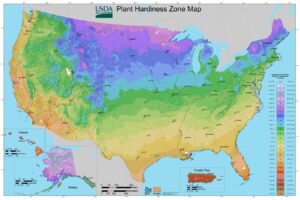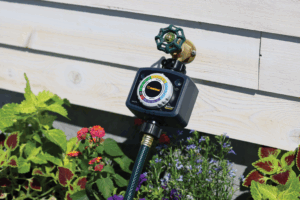Wondering when to plant grass and fertilize your lawn? Fall is the best time to do it. The autumn season comes with a mix of warm soil and cool air, perfect for planting grass seed and allowing time for new grass roots to develop before winter sets in. It is also a good time to fertilize to build stronger, deeper roots for winter, which will result in a thicker, greener lawn next spring.
Depending on your lawn’s condition, here are a few simple ways to take advantage of the ideal fall conditions for seeding and feeding.

Fix Bare Spots
It’s easy to give your green space a little TLC by patching those bare spots.
You can use a hand rake or other tool to help loosen the top layer of soil. This will give the new seed a better chance to take hold and begin to establish strong roots.
Next, you can apply your seed and give the newly seeded patch a deep and thorough watering; stop when you see the water start to puddle. To keep the seeds hydrated and allow them to grow to their full potential, the patch will likely need to be watered daily, unless a significant amount of rain is forecasted.
Overseed your Thinning Lawn
To overseed your lawn, the first step is to set your mower to one of its lowest settings, allowing you to cut the grass to a height of 2 inches or less, and then bag the clippings. Next, rake the lawn to remove any dead grass and debris and loosen up the upper layer of soil so it will be easier for seeds to take root once they’ve sprouted. Fill and adjust the spreader according to the instructions on the product package and apply as directed.
Depending on where you live there are several types of grass seed to choose from, Use our helpful guide on identifying your grass to know what kind of grass you have so you know what type of seed to buy.
The difference between a “so-so” lawn and a gorgeous lawn, both now and next spring, is the one-two punch of a pair of fall feedings. Fertilize your lawn in early fall and again 6 to 8 weeks later. This will help build strong, deep grass roots for a thicker, better lawn come spring, but it also provides nutrients to help repair damage from summer heat, drought, and activity.




